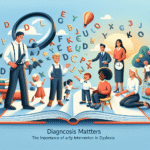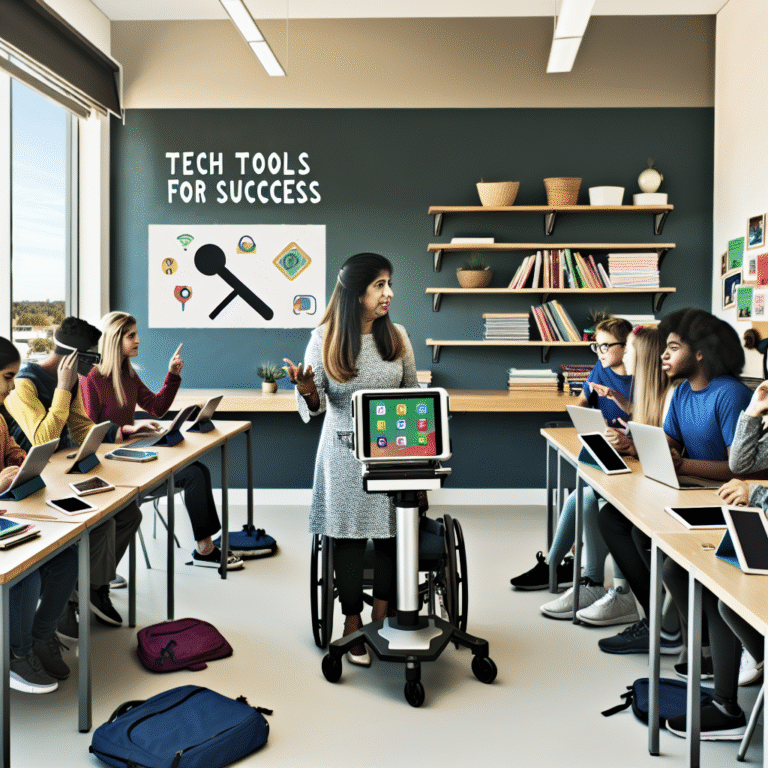
Navigating the Learning Landscape: Types of Learning Disabilities Explained
Introduction
In an increasingly complex world, the ability to navigate our learning environments is crucial not only for academic success but for holistic development in life. However, for many individuals, this journey is complicated by learning disabilities that can hinder their academic performance, social interactions, and self-esteem. Navigating the Learning Landscape: Types of Learning Disabilities Explained aims to shed light on these challenges, demystify the various types of learning disabilities, and offer valuable insights for parents, educators, and advocates. With a blend of research-backed information, real-world case studies, and actionable strategies, this article equips you with the knowledge to recognize, understand, and assist those navigating these unique landscapes of learning.
Understanding Learning Disabilities
At their core, learning disabilities are neurological disorders that significantly affect an individual’s ability to process, retain, and communicate information. They are often lifelong challenges that can manifest in various areas of learning, including reading, writing, and mathematics. It’s important to note that learning disabilities do not reflect an individual’s intelligence level; many individuals with learning disabilities possess average or above-average intellect.
The Importance of Early Identification
Early identification and intervention are critical for individuals with learning disabilities. Research has shown that timely support – whether through specialized teaching, tutoring, or accommodations – can significantly improve educational outcomes. According to the National Center for Learning Disabilities, students with early support are more likely to successfully transition into adulthood, pursuing higher education and fulfilling careers.
Types of Learning Disabilities
1. Dyslexia
Dyslexia is perhaps the most well-known learning disability. It primarily affects reading and language processing. Individuals with dyslexia may struggle with reading fluency, decoding, and spelling, often leading to frustration in academic settings.
Case Study: Ryan’s Reading Journey
Ryan, a third-grader, loves stories but finds reading difficult. His struggles became apparent when he confused words that looked alike and had trouble sounding out new words. With the help of a specialized reading program, tailored to his needs, Ryan gradually improved, moving from a struggling reader to one who could confidently navigate complex texts.
Analysis: Ryan’s story highlights the importance of identifying dyslexia early and implementing effective, individualized instructional strategies.
2. Dyscalculia
Dyscalculia is characterized by difficulties with number sense, mathematical reasoning, and the ability to grasp mathematical concepts. It can manifest as trouble with counting, telling time, and understanding mathematical symbols.
Case Study: Sara’s Math Mastery
Sara, a high school student, struggled with basic arithmetic, often misplacing numbers in calculations. After obtaining a formal diagnosis of dyscalculia, her parents sought tutoring that emphasized visual aids and contextual learning. Over time, Sara not only caught up with her peers but developed a love for mathematical puzzles.
Analysis: This case illustrates how tailored approach to instruction and the use of engaging materials can transform a student’s experience with dyscalculia.
3. Dysgraphia
Dysgraphia affects writing skills, often making it difficult for individuals to express their thoughts in written form. This can include challenges with handwriting, spelling, and organizing written work.
Case Study: Mark’s Written Expression
Mark, a fifth-grader, excelled at verbal communication but struggled with writing assignments. His written work was often disorganized, and his handwriting was barely legible. After implementing assistive technology and structured writing interventions, Mark began to produce clearer and more coherent written work.
Analysis: Mark’s journey exemplifies how combining technology with structured teaching approaches can unlock a child’s potential in overcoming the barriers of dysgraphia.
4. Auditory Processing Disorder (APD)
Individuals with APD have difficulty processing and understanding auditory information even though their hearing is normal. This can affect how they follow instructions, understand speech, and engage in conversations.
Case Study: Emily’s Listening Skills
Emily often appeared to ignore her teachers, leading to frustration for both her and her parents. After a thorough evaluation, it was determined she had APD. Strategies such as preferential seating, using visual aids, and minimizing background noise helped Emily become more engaged during lessons.
Analysis: Emily’s experiences stress the importance of environmental modifications and tailored educational strategies in addressing APD effectively.
5. Nonverbal Learning Disabilities (NVLD)
NVLD is characterized by difficulties with nonverbal cues, social interactions, and motor skills, while verbal skills may remain intact. Individuals with NVLD may struggle with physical coordination and interpreting social situations.
Case Study: Alex’s Social Skills Development
Alex, a middle school student, excelled academically but found social situations overwhelming. By participating in social skills groups designed for children with NVLD, he learned to read body language and engage in conversations. Over time, Alex became more confident and socially adept.
Analysis: This case highlights the value of social skills training and its effectiveness in cultivating interpersonal success for individuals with NVLD.
Navigating Support Systems
Navigating the learning landscape when it comes to disabilities involves leveraging a variety of resources. Understanding the educational framework and possible accommodations available is essential.
Educational Plans and Accommodations
Individualized Education Programs (IEPs): These formal documents outline specific educational strategies, support, and accommodations for students with learning disabilities.
504 Plans: For students who do not qualify for IEPs but still require support, 504 Plans mandate accommodations to support access to education.
- Differentiated Instruction: This approach involves tailoring instruction methods according to the diverse needs of learners, ensuring curriculum accessibility.
Building a Support Network
When navigating the learning landscape, building a support network is vital. This network may include:
- Parents and Guardians: Providing encouragement and support at home.
- Teachers and Special Educators: Collaborating to create an effective learning environment and addressing specific needs.
- Peers: Engaging with classmates who can provide social interaction and support the learning process.
Conclusion
Navigating the Learning Landscape: Types of Learning Disabilities Explained underscores the significance of awareness, understanding, and intervention in supporting individuals with learning disabilities. Through early identification, tailored instructional strategies, and a supportive community, we can facilitate meaningful progress and empower those who may struggle with these challenges. By fostering an inclusive environment, we create pathways for success that extend beyond academic achievement into enriching lives and communities.
FAQs
1. What are the common signs of learning disabilities?
Common signs include difficulty with reading, writing, math, organization, and following directions.
2. How are learning disabilities diagnosed?
A comprehensive evaluation conducted by a qualified psychologist or educational specialist includes assessments of cognitive, academic, and behavioral performances.
3. Can learning disabilities be outgrown?
While some individuals may develop coping strategies, learning disabilities are generally lifelong challenges requiring ongoing support.
4. What accommodations can schools provide for students with learning disabilities?
Accommodations may include extended time on tests, alternative formats for assignments, use of technology, and tailored teaching methods.
5. How can parents support a child with learning disabilities?
Parents can advocate for their child, provide a supportive home environment, and collaborate with teachers to ensure appropriate strategies are implemented.
6. Are there resources available for adults with learning disabilities?
Yes, numerous organizations offer resources, including workshops, advocacy groups, and employment support tailored for adults with learning disabilities.
By grasping the intricacies of learning disabilities and embarking on this journey together, we can transform the learning landscape for everyone involved. Whether you are a parent, educator, or an individual navigating these pathways, remember that this expedition is not one taken alone but rather one where collective support creates a brighter horizon.









